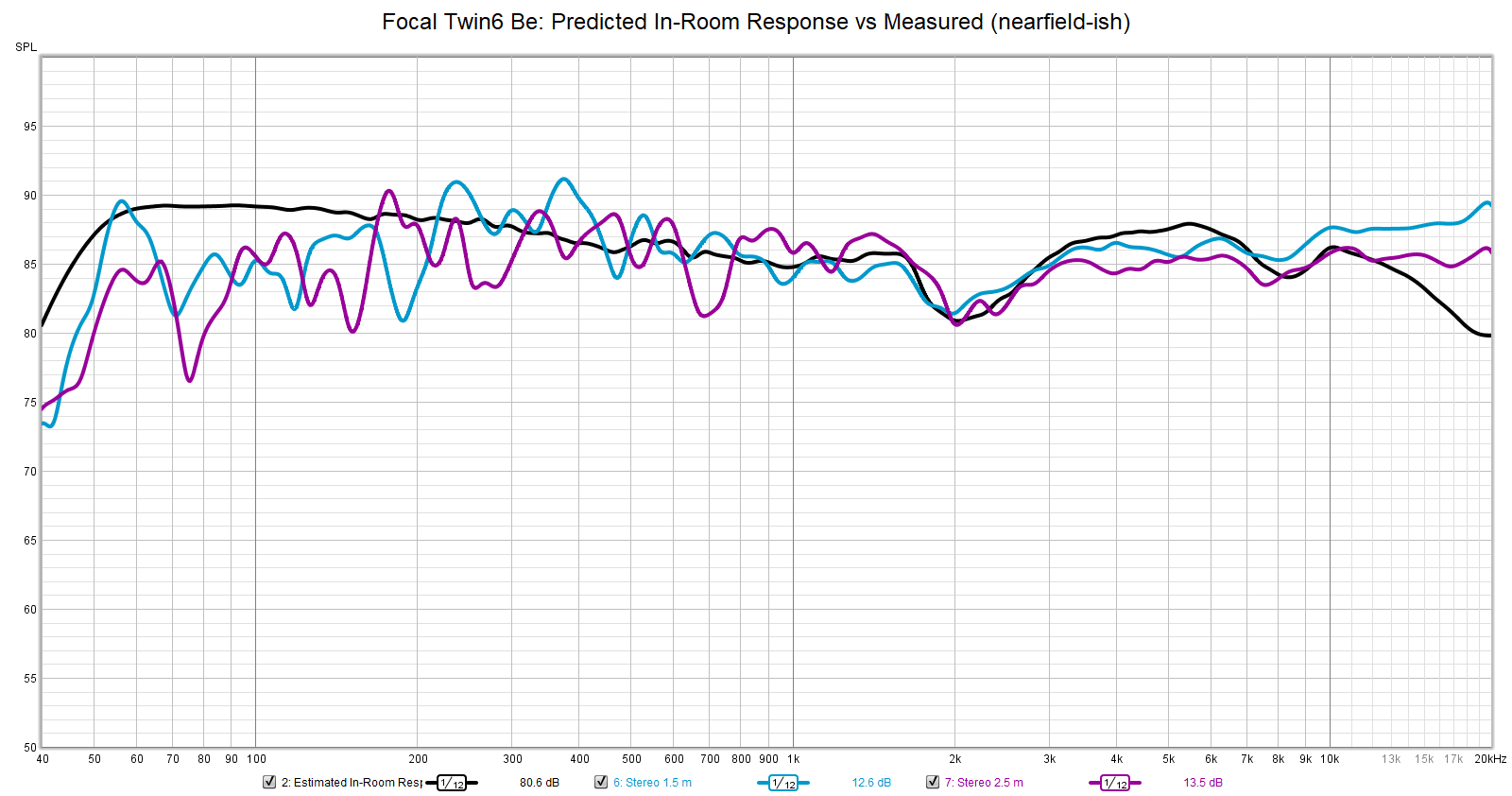Even more "evidence" that when in the nearfield the room matters less and less...
Look at the on-axis response. See the sharp dip around 5kHz?
Now look at the LW response. No dip there.
Now look at the PIR. No dip there.
Now, look at the measured in-room response. The 5kHz dip is there but only at 1.5m. But at 2.5m it is gone.
I think this sufficiently proves that when in the nearfield-ish range, the on-axis is much more influential than any of the room effects. As you move further away, the room effects take over. This shouldn't be surprising, really. But it's nice to see how the two distances measured in my in-room response show this trend pretty clearly.
Edit: Again, to be 100% clear, I am not saying the room doesn't matter. I am saying that at a certain distance from the speaker, relative to the size of your room, the room effects are less impactful.




